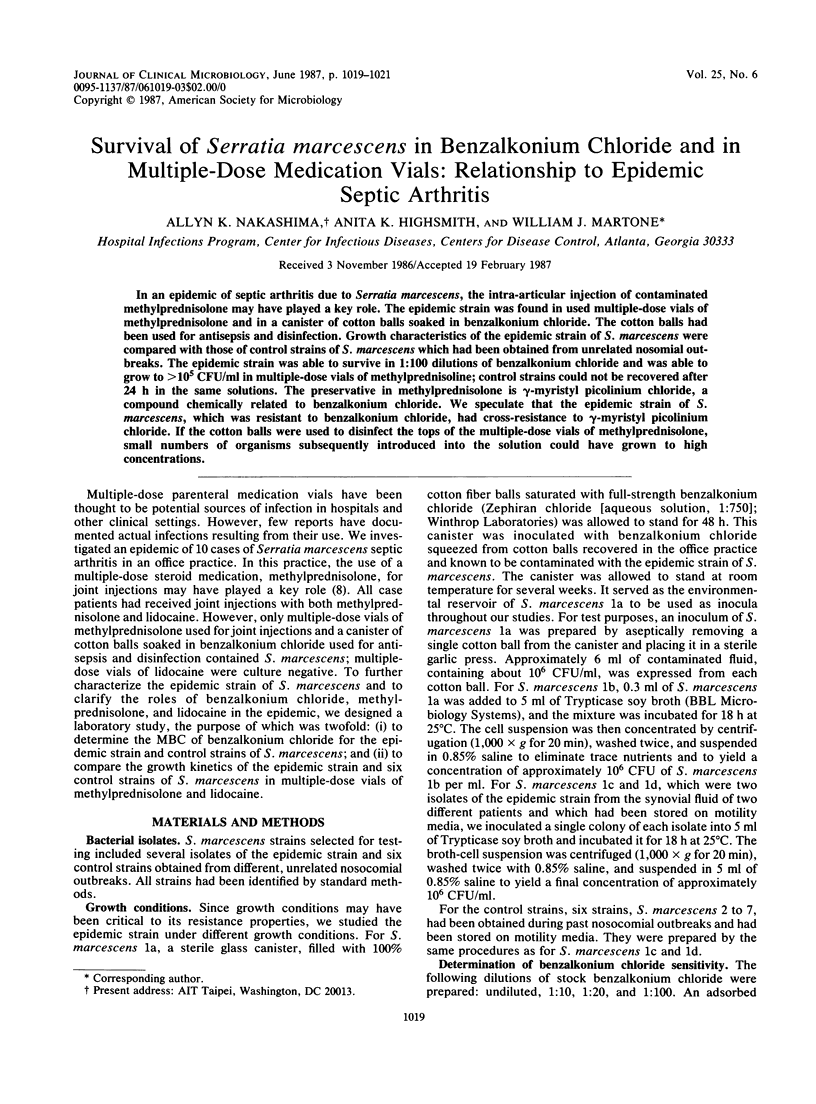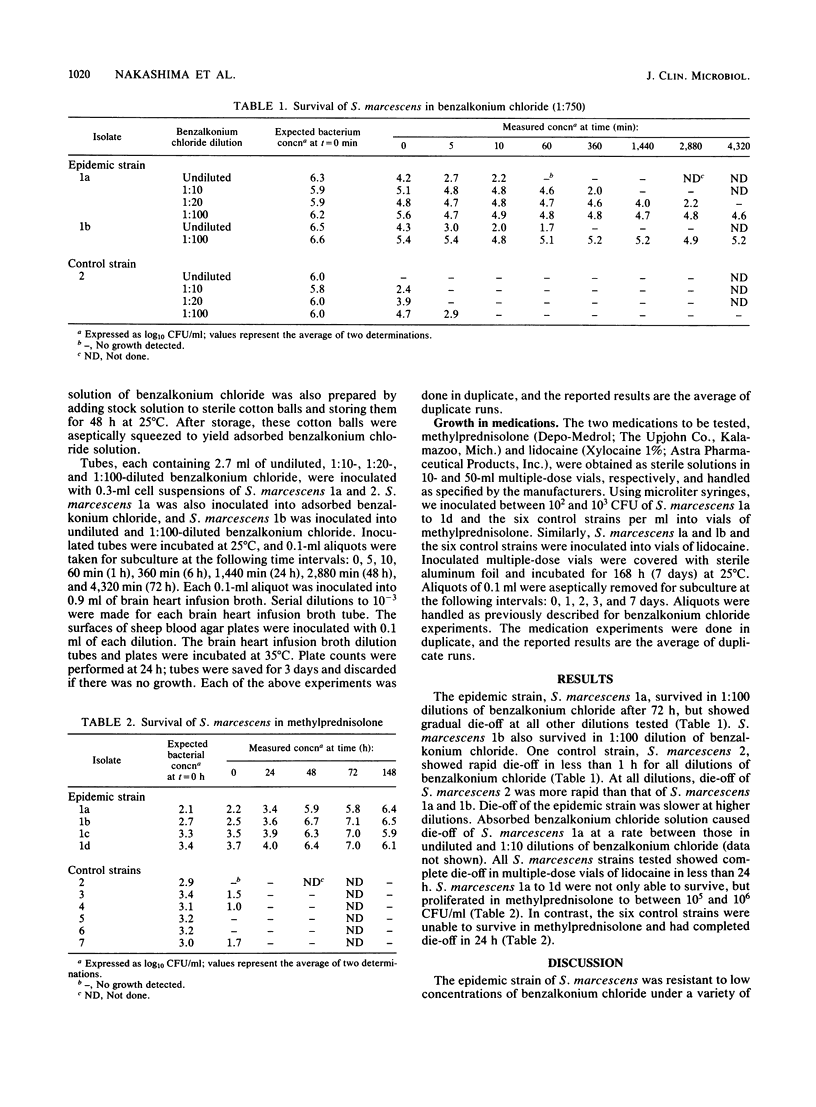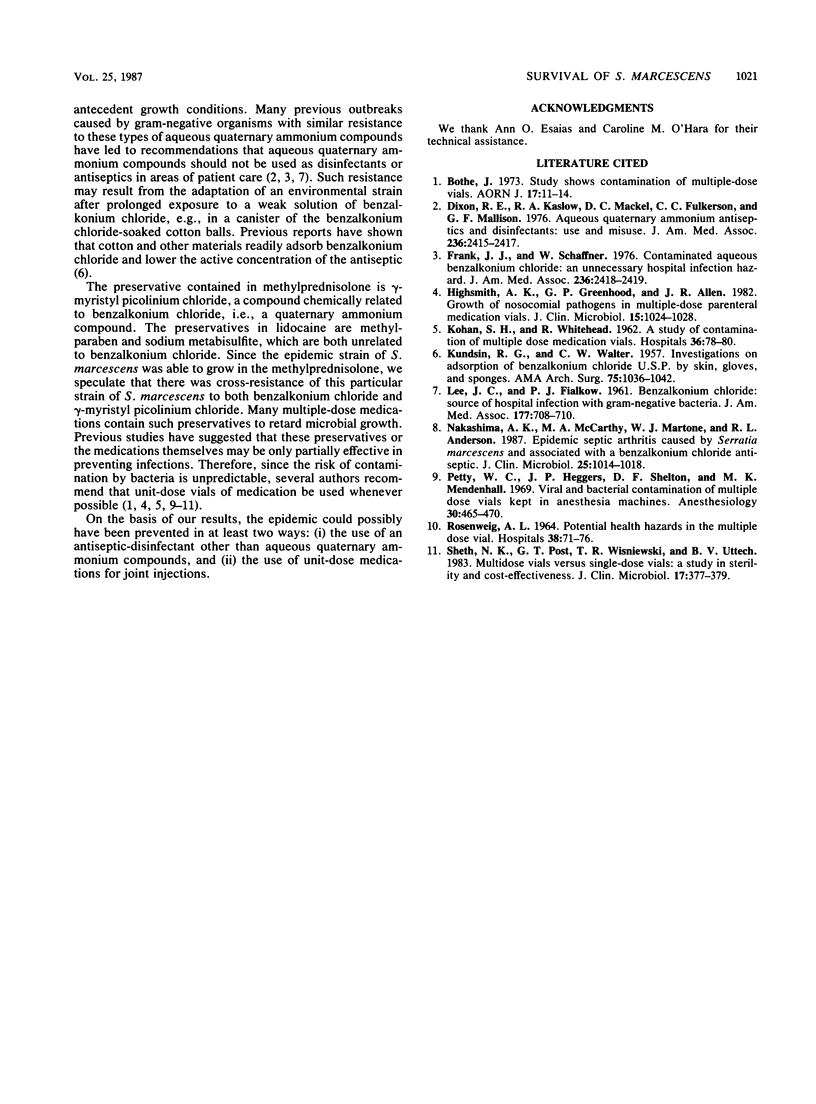Abstract
In an epidemic of septic arthritis due to Serratia marcescens, the intra-articular injection of contaminated methylprednisolone may have played a key role. The epidemic strain was found in used multiple-dose vials of methylprednisolone and in a canister of cotton balls soaked in benzalkonium chloride. The cotton balls had been used for antisepsis and disinfection. Growth characteristics of the epidemic strain of S. marcescens were compared with those of control strains of S. marcescens which had been obtained from unrelated nosocomial outbreaks. The epidemic strain was able to survive in 1:100 dilutions of benzalkonium chloride and was able to grow to greater than 10(5) CFU/ml in multiple-dose vials of methylprednisoline; control strains could not be recovered after 24 h in the same solutions. The preservative in methylprednisolone is gamma-myristyl picolinium chloride, a compound chemically related to benzalkonium chloride. We speculate that the epidemic strain of S. marcescens, which was resistant to benzalkonium chloride, had cross-resistance to gamma-myristyl picolinium chloride. If the cotton balls were used to disinfect the tops of the multiple-dose vials of methylprednisolone, small numbers of organisms subsequently introduced into the solution could have grown to high concentrations.
Full text
PDF


Selected References
These references are in PubMed. This may not be the complete list of references from this article.
- Dixon R. E., Kaslow R. A., Mackel D. C., Fulkerson C. C., Mallison G. F. Aqueous quaternary ammonium antiseptics and disinfectants. Use and misuse. JAMA. 1976 Nov 22;236(21):2415–2417. [PubMed] [Google Scholar]
- Frank M. J., Schaffner W. Contaminated aqueous benzalkonium chloride. An unnecessary hospital infection hazard. JAMA. 1976 Nov 22;236(21):2418–2419. [PubMed] [Google Scholar]
- Highsmith A. K., Greenhood G. P., Allen J. R. Growth of nosocomial pathogens in multiple-dose parenteral medication vials. J Clin Microbiol. 1982 Jun;15(6):1024–1028. doi: 10.1128/jcm.15.6.1024-1028.1982. [DOI] [PMC free article] [PubMed] [Google Scholar]
- KOHAN S., CARLIN H., WHITEHEAD R. A study of contamination of multiple-dose medication vials. Hospitals. 1962 Jul 16;36:78–78. [PubMed] [Google Scholar]
- KUNDSIN R. B., WALTER C. W. Investigations on adsorption of benzalkonium chloride U.S.P. by skin, gloves, and sponges. AMA Arch Surg. 1957 Dec;75(6):1036–1042. doi: 10.1001/archsurg.1957.01280180168027. [DOI] [PubMed] [Google Scholar]
- LEE J. C., FIALKOW P. J. Benzalkonium chloride-source of hospital infection with gram-negative bacteria. JAMA. 1961 Sep 9;177:708–710. doi: 10.1001/jama.1961.73040360013012a. [DOI] [PubMed] [Google Scholar]
- Nakashima A. K., McCarthy M. A., Martone W. J., Anderson R. L. Epidemic septic arthritis caused by Serratia marcescens and associated with a benzalkonium chloride antiseptic. J Clin Microbiol. 1987 Jun;25(6):1014–1018. doi: 10.1128/jcm.25.6.1014-1018.1987. [DOI] [PMC free article] [PubMed] [Google Scholar]
- Petty W. C., Heggers J. P., Shelton D. F., Mendenhall M. K. Viral and bacterial contamination of multiple-dose drug vials kept in anesthesia machines. Anesthesiology. 1969 Apr;30(4):465–470. doi: 10.1097/00000542-196904000-00019. [DOI] [PubMed] [Google Scholar]
- Sheth N. K., Post G. T., Wisniewski T. R., Uttech B. V. Multidose vials versus single-dose vials: a study in sterility and cost-effectiveness. J Clin Microbiol. 1983 Feb;17(2):377–379. doi: 10.1128/jcm.17.2.377-379.1983. [DOI] [PMC free article] [PubMed] [Google Scholar]


